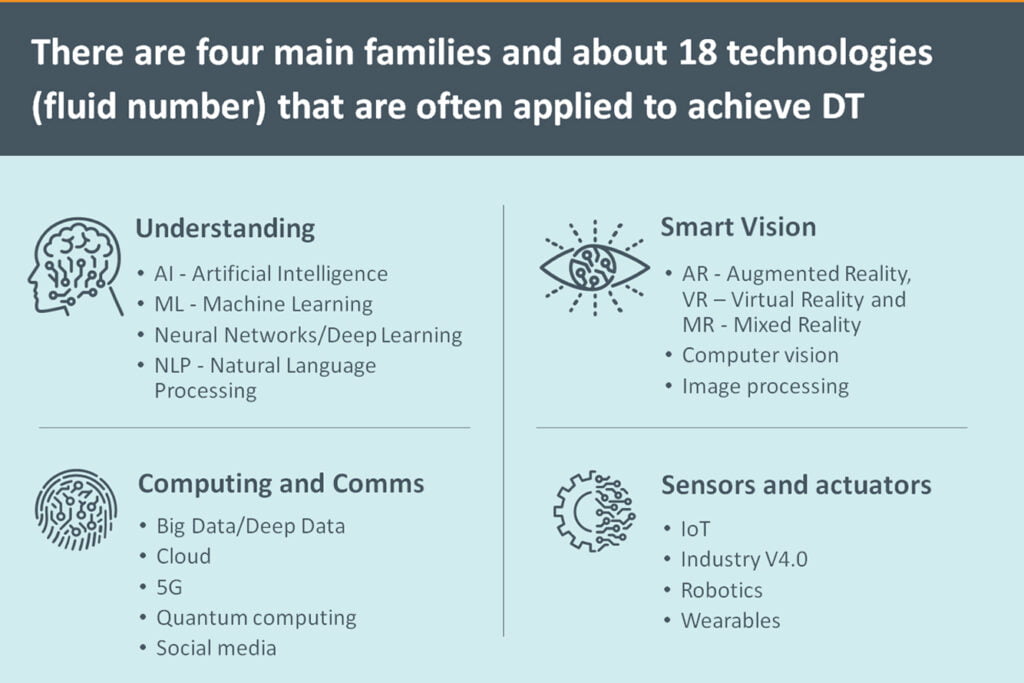In the past 2-3 years, many of the companies we are in touch with have been dealing in one way or another with Digital Transformation. This can happen for several reasons, some more relevant and logical, others less so. Among them: pressure from owners, stockholders or the public; the stress of seeing competitors enter the field; new hires (usually younger) flowing in with both knowledge and aspirations in the digital sphere; customers’ expectations (realistic or imaginary), and more. While working and talking with these companies, we at SIT have been accumulating quite a bit of experience in helping organizations overcome the challenges and reaping the rewards of Digital Transformation. Among other insights collected in our DT work on four continents, we have identified 10 Barriers that hinder these efforts. In this post we are happy to share 4 of them, with a few notes on directions for overcoming them. In the next posts we will share some of the others.
You will encounter a variety of barriers and road bumps:
4 (of 10) Barriers for Achieving Digital Transformation
1.
It is truly difficult to trust experts on DT, especially the “experts” that abound, because they (we?) all have biased POVs (and are probably all trying to sell you their wares, hard or soft). The first step in searching for an expert is to clearly define an expert for what you are looking for. Companies engaging in Digital Transformation tend to rush to providers of digital systems and services: transferring to the cloud, designing snazzy apps, implementing blockchain, before they have a clear and coherent picture of what they are trying to achieve and why. They tend to forget in spite of the warnings, that DT is first and foremost about transformation, and only then about digital.
2.
Security concerns (real and imagined). It is true that the more digitally sophisticated your processes become, the more vulnerable they are to tampering and cyber-attacks, and these are not at all imaginary. The recent ransomware attack on the Colonial Pipeline Company, that stopped fuel flow to a large chunk of the US East Coast for over a week, was just a frightening reminder of the hundreds of similar attacks that have probably occurred this year on private companies’ IT infrastructures. The good news is that when cyber security considerations are built into digital practices from the outset, risks can be strongly mitigated. And, yes, it’s safer to ride in horse-driven carriages but were we supposed to give up on motorizing our company fleets because of this?
3.
Ignorance of relevant technologies (and terminology) often accompanied by a fear thereof (the “Quantum Computing Effect”). In our experience there are about 15-20 technologies that one needs to know at least a tiny bit about in order to intelligently assess your DT status and potential. Quantum Computing, for example, is probably not something you need to implement in the next year or two, but you would be surprised how soon it could revolutionize your field (pharma developers, for one, should be, and probably are, very alert to the possibility). Our list of 18 technologies to watch is not exhaustive but a good start.

4.
Mixed signals from top management:
a. The “ambidextrous” effect – the demand that you keep selling current offerings like crazy and at the same time invest plenty of time and energy on DT;
b. Management demands DT but is itself lacking in all digital or transformative understanding and behaviors;
c. Management demands DT but is unwilling to invest substantially before you present them with a concrete business case, although how you can be expected to produce such a business case without receiving some budget for (at the very least) collecting and analyzing data is anyone’s guess.
Dealing with (higher than you) management is notoriously difficult, obviously, but we find that delicately pointing out the abovementioned points can facilitate what can turn into a constructive conversation.
In upcoming articles and posts, we will share some of the other barriers as well as some of the methods and techniques we apply to the challenge. We are also always happy to get on a short call, with those who would like to pick our brains or use us as a sounding board on anything to do with thinking and acting differently to achieve your objectives.
